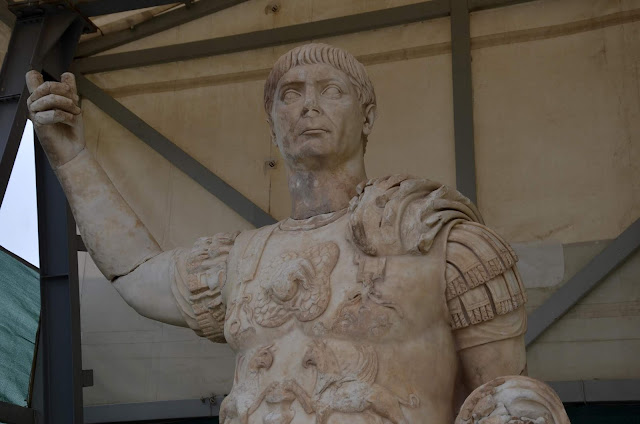Archaeologists in the ancient city of Laodicea (Lat. Laodicea ad Lycum) in the western Turkish province of Denizli have unearthed a grandiose statue of Trajan, one of the greatest Roman emperors, dating back to 113 AD.
 |
| Credit: Hurriyet Daily News |
Excavations have been carried out under the leadership of Professor Celal Şimşek in the ancient city.
Stating that the sculpture was among the most important artefacts unearthed in the ancient city in the last 15 years, Şimşek said: “The most important and longest inscription of the ancient era, the ‘Water Law’ was also unearthed along with this sculpture.”
“We found that it was made in 113 AD given that the emperor died in 117. There had been many Hadrian sculptures unearthed so far, but such emperor Trajan sculptures is of high-quality. It must have been made by an artist who saw the emperor in person. The portrait features on his face are really intricate and detailed. Trajan was a real soldier emperor and expanded the Roman Empire to its farthest limits. He also made the empire very rich,” the professor added.
 |
| Credit: DHI |
“The images on the armour can be observed very clearly. On the upper part there is the thunder of Jupiter, the celestial god of thunder. Medusa is located right in the middle of the chest, which is important because it shows the emperor’s frightening side. There are two reciprocal griffins which are symbols of Apollo, patron of the fine arts. With this, what comes to mind is that the emperor supported the fine arts,” he said.
“The griffins stretch their front legs towards a water bowl. Given the Water Law, it shows that he was an emperor who financed the construction of an acqueduct to Laodicea with arches and pipes made of travertine... After that, because Laodicea was a very rich city, they erected a great statue at this fountain,” he added.
The statue had broken into 356 pieces after a destructive earthquake, burying them all under the fountain which it stands on today. The finding is unique and unprecedented in the world, and is believed to be exactly 1906 years old.
Source: Hurriyet Daily News [March 30, 2019]







No comments: